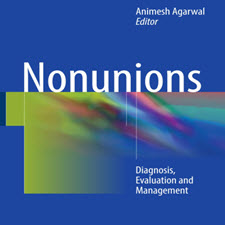Management of Early Progressive Corneal Ectasia
ABSTRACT
Prior to the advent of the corneal collagen cross-linking procedure, no conservative treatment for corneal ectasia existed, with 20% of keratoconus patients progressing to eventually require penetrating keratoplasty. Collagen cross-linking in the cornea as a treatment for ectasia was the breakthrough of Theo Seiler, MD, PhD, a professor of ophthalmology at Dresden Technical University, Germany at the time of the discovery. As he has told the story many times, Professor Seiler had his moment of inspiration in a dental chair, when he learned that UV light is used to harden dental fllings through the induction of cross-links. If the natural increase in non-enzymatic cross-linking that occurred with age led to increased corneal strength, could a physical means of inducing cross-linking be used to stabilize keratoconus? This initiated his frst investigation to determine “whether the elastic modulus of corneal tissue can be increased by cross-links of collagen fbrils induces by UV irradiation of the cornea” . Cross-linking was developed as a method of stabilizing the structurally weak corneas of patients with keratoconus, and has not only revolutionized the treatment of ectatic disorders, but has also become a platform technology including accelerated crosslinking (ACXL) with numerous additional clinical applications.
INTRODUCTION
The structure of the cornea, interacting with the forces applied to it (predominantly, intra-ocular pressure and gravity) help defne the shape of the cornea. Thus, the cornea can maintain a reasonably constant shape and corneal curvature due to the tensile strength of the stromal collagen fbrils. The orderly structure of the cornea, and particularly the orientation of the stromal collagen fbrils, enables light to pass through it with minimal disruption or scatter. The corneal stroma is composed mainly of collagen, proteoglycans and water. The lamellar organization of the collagen fbrils which make up the corneal stroma is the primary source of the biomechanical strength of the cornea, and is regulated by interaction with proteoglycans . The precise arrangement of the stromal collagen lamellae is critical for maintaining ocular transparency and is thought to be responsible for the corneal shape . Stromal collagen lamellae run in bands across the cornea in a limbus to limbus orientation. Deeper lamellae tend to run parallel to one another, whereas anterior lamellae are more intertwined and insert into the anterior limiting lamina (Bowman’s membrane) .
چکیده
قبل از ظهور پروتئین متقابل کلاژن قرنیه، هیچ درمان محافظه کارانه ای برای اکستازی قرنیه وجود نداشته و 20٪ از بیماران کراتوکونوس پیشرفت کرده و به نهایت نیاز به کراتوپلاستی نفوذی می دهند. اتصال کلاژن در قرنیه به عنوان یک درمان برای اکستازی، دستیابی به موفقیت Theo Seiler، MD، PhD، استاد چشم پزشکی در دانشگاه فنی درسدن، آلمان در زمان کشف بود. همانطور که او چند بار گفته است، پروفسور Seiler لحظه ای از الهام بخش در صندلی دندانپزشکی، زمانی که او متوجه شد که نور UV استفاده می شود برای سخت شدن فورنال های دندانی از طریق القا عبور متقابل. اگر افزایش طبیعی در متصل شدن غیر آنزیمی که با سن رخ می دهد موجب افزایش قدرت قرنیه شود، می تواند یک روش فیزیکی برای القای اتصال متقابل برای تثبیت کراتوکونوس استفاده شود؟ این تحقیقات خود را آغاز کرد تا تعیین کند “آیا می توان مدول الاستیک از بافت قرنیه را می توان توسط لینک های متقابل fbrils کلاژن ناشی از اشعه ماوراء بنفش قرنیه افزایش می یابد.” اتصال متقابل به عنوان یک روش تثبیت قرنیه ضعیف ساختاری بیماران مبتلا به کراتوکونوس ایجاد شده است و نه تنها باعث تغییرات در درمان اختلالات اکتاشی شده است بلکه تکنولوژی پلتفرمی از جمله پیوند صلیبی شتاب دهنده (ACXL) با برنامه های متعدد بالینی اضافی را تبدیل کرده است.
مقدمه
ساختار قرنیه، در تعامل با نیروهای اعمال شده بر روی آن (عمدتا فشار و گرانش داخل چشم) به شکل قرنیه کمک میکند. بنابراین، قرنیه می تواند شکل ثابت و شکل انحنای قرنیه را به دلیل استحکام کششی فریل های کلاژن استروما حفظ کند. ساختار منظم قرنیه و به ویژه جهت گیری fbrils کلاژن استروما، نور را قادر می سازد تا از طریق آن با حداقل اختلال یا پراکندگی عبور کند. استروما قرنیه عمدتا از کلاژن، پروتئگلیکان و آب تشکیل شده است. سازماندهی لاملا از کلاژن fbrils که تشکیل استروما قرنیه منبع اصلی قدرت بیومکانیک قرنیه است، و با تعامل با پروتئگلیکان ها تنظیم می شود. ترتیب دقیق لاملا کلاژن استروما برای حفظ شفافیت چشم ضروری است و تصور می شود که مسئول تشکیل شکل قرنی است. لاملا کلاژن استروما در باند های مختلف در قرنیه در یک لنفوم به جهت لنفوم قرار می گیرد. لاملا عمیق تر مایل به موازی با یکدیگر هستند، در حالی که لامهای قدامی بیشتر در هم تنیده می شوند و در لامینای محدود قدامی قرار دارند (غشای بومان).
Year: 2016
Publisher: SPRINGER
By : Cosimo Mazzotta, Frederik Raiskup ,Stefano Baiocchi , Giuliano Scarcelli ,Marc D. Friedman , Claudio Traversi
File Information: English Language/ 222 Page / size: 7.81 MB
سال : 1395
ناشر : SPRINGER
کاری از : کوزیمو مازوتا، فردریک راسکپ، استفانو بایکوچی، جیولیانو اسکارلی، مارک دی. فریدمن، کلودیو تراورسی
اطلاعات فایل : زبان انگلیسی / 222 صفحه / حجم : MB 7.81
[sdfile url =”http://dl.taliem.ir/book/pezeshki/Management.of.Early.Progressive.Corneal.Ectasia.Accelerated_taliem.ir.rar”]


![Management.of.Early.Progressive.Corneal.Ectasia.Accelerated.[taliem.ir]](https://taliem.ir/wp-content/uploads/Management.of_.Early_.Progressive.Corneal.Ectasia.Accelerated.taliem.ir_.jpg)
![Knowledge Workers and the Principle of 3S (Self-management, Selforganization, Self-control)[taliem.ir] Knowledge Workers and the Principle of 3S (Self-management, Selforganization, Self-control)[taliem.ir]](https://taliem.ir/wp-content/uploads/Knowledge-Workers-and-the-Principle-of-3S-Self-management-Selforganization-Self-controltaliem.ir_.jpg)
![Design and development of logistics workflow systems for demand[taliem.ir] Design and development of logistics workflow systems for demand[taliem.ir]](https://taliem.ir/wp-content/uploads/Design-and-development-of-logistics-workflow-systems-for-demandtaliem.ir_.jpg)
![Health information systems Failure, success[taliem.ir] Health information systems Failure, success[taliem.ir]](https://taliem.ir/wp-content/uploads/Health-information-systems-Failure-successtaliem.ir_.jpg)
![CogNet A Network Management Architecture[taliem.ir] CogNet A Network Management Architecture[taliem.ir]](https://taliem.ir/wp-content/uploads/CogNet-A-Network-Management-Architecturetaliem.ir_.jpg)
![Working Capital Management and Profitability of Firms A[taliem.ir] Working Capital Management and Profitability of Firms A[taliem.ir]](https://taliem.ir/wp-content/uploads/Working-Capital-Management-and-Profitability-of-Firms-Ataliem.ir_.jpg)
![Contemporary.Management.of.Jugular.[taliem.ir] Contemporary.Management.of.Jugular.[taliem.ir]](https://taliem.ir/wp-content/uploads/Contemporary.Management.of_.Jugular.taliem.ir_.jpg)

![Technology Management as a tool of innovative strategy of[taliem.ir] Technology Management as a tool of innovative strategy of[taliem.ir]](https://taliem.ir/wp-content/uploads/Technology-Management-as-a-tool-of-innovative-strategy-oftaliem.ir_.jpg)
![Hand.and.Wrist.Anatomy.and.Biomechanics.[taliem.ir]](https://taliem.ir/wp-content/uploads/Hand.and_.Wrist_.Anatomy.and_.Biomechanics.taliem.ir_-150x150.jpg)

دیدگاه خود را ثبت کنید
تمایل دارید در گفتگو شرکت کنید؟نظری بدهید!